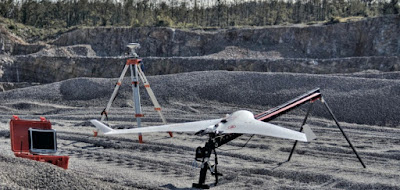This lab was designed to introduce ESRI ArcCollector as a tool for collecting data in the field. ArcCollector is an application that can be downloaded onto any apple or android device and used to collect spatial data. The application is set up in a mapping interface that allows the user to drop a point and fill out information. In this lab, a microclimate survey was conducted by the class of the University of Wisconsin-Eau Claire and the surrounding area. ArcCollector allows the class to simultaneously collect data points and add them to a map in real time. Each group is able to collect information about the climate at different parts on campus, and update points on a map in real time. This map can be viewed on a computer or phone and the progress of the data collection can be monitored.
Methods:
The first step to creating a collector map is to create an online map that has an empty feature class to be populated by people in the field. This feature is given fields that are to be filled out by people in the field. This was all done by Professor Hupy in this lab. This lab began with down loading the ArcCollector app and signing into the UWEC Enterprise ArcGIS online account. On a computer, a request was sent to be part of our class group on ArcGIS online. Being a member of the group allowed users to have access to maps that were shared to that group. Once a member of the Field Methods group and the app was opened on a phone, the user simply opened the map on collector and they were ready to add data! The class was separated into groups of two and sent around campus to collect weather information. The following list are the fields each group filled in when taking a data point:
-Temperature
-Wind Chill
-Dew Point
-Wind Speed
-Wind Direction
-Group Number
-Notes
-Time
To get this data a hand held "weather station" was used, this provided all the necessary data. To data a data point, the "plus" icon in the app in selected and it prompts the user to enter the above data. Each of the fields is filled out and when submit is selected, the app drops a point from the phone's gps with the data that was entered! Each group was sent out for over an hour to collect as many points as they could.
Once back in the lab, the data collected in the field was downloaded onto a local drive off the internet by downloading the feature layer from ArcGIS online. This was simply done by finding the right layer that was created by Professor Hupy, and clicking it. This opens a page that allows the user to open the feature in ArcMap Desktop. The following image is a screenshot of the screen that allows the user to open the feature in desktop. (figure 1)
 |
| Figure 1 |
This opens ArcMap with the point feature open as a feature layer. This data is not ready to be manipulated. The actual point layer then needs to be exported as a feature class into the appropriate geodatabase. Now the point feature is in a local drive and ready to be made into a high quality map. The next step in this lab was to use this data to create maps.
Results:
A map with just the points where data was collected would not be very useful. The true power to the data that was collected lies within its attributes. The first map created is a map that symbolizes wind speed and direction. The size of the arrow represents the speed of the wind and the direction of the arrow represents the direction the wind was coming from in that specific location. It is very interesting to see how elevation, buildings, woods, and other elements affect wind speed and direction
 |
| Figure 2 |
 |
| Figure 3 |
Conclusion:
ArcCollector is a very powerful application that can be very valuable in many applications. Within our class, we were able to collect hundreds of points in about an hour. In order to do this without Collector, people would have to write down the data by hand, then come back into the lab and enter the data into an excel sheet by hand, then import the data into ArcMap. They would also have to collect the coordinates of the point. To do this for hundreds of points would take days instead of hours. This method also requires more skills in ArcMap. Collector allows people with little GIS experience to collect valuable data very easily. You might be thinking, what if there is no internet access? Collector has a solution! Maps can be downloaded onto collector and points can be added to the map. This data can be uploaded to ArcGIS online when an internet connection is established. GPS's use satellite signal that does not require internet. Collector also supports streaming line data, attaching pictures to points, taking multiple kinds of spatial data and many more! This data is easily transferred into other Arc applications that allows for advanced data manipulation to take place.













